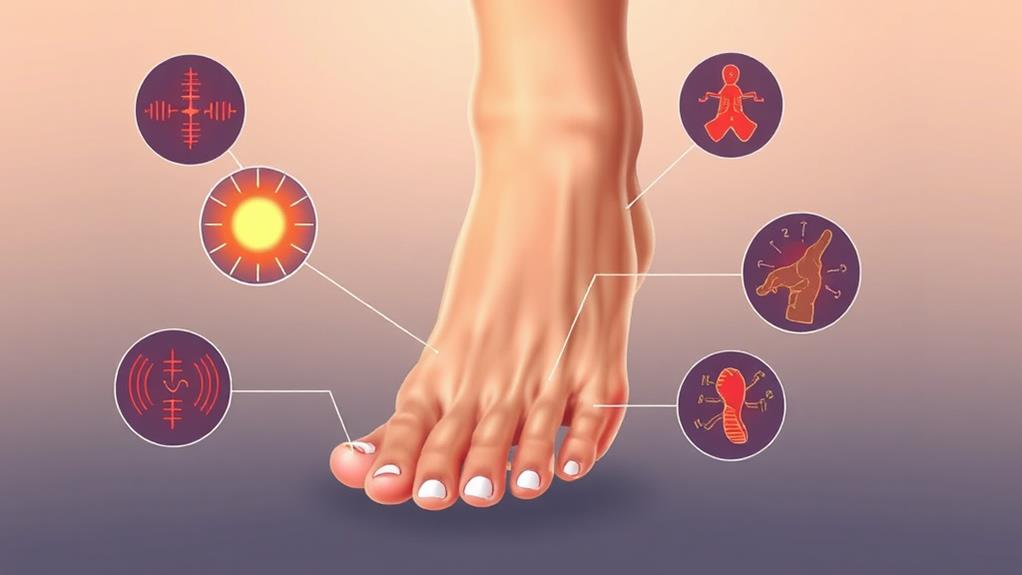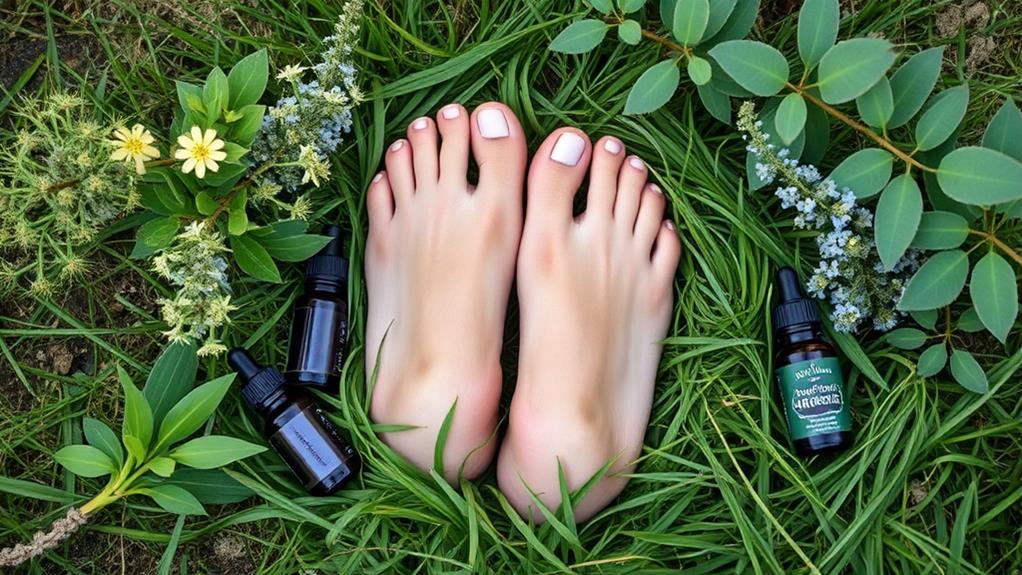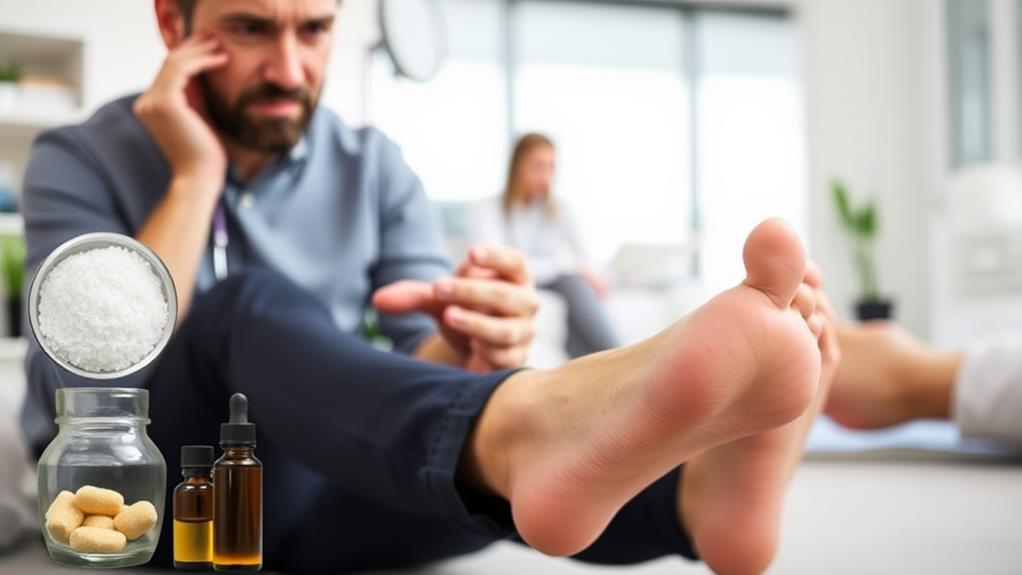You might wonder why doctors often overlook simple, natural remedies for bunions, opting instead for surgical interventions that promise fast relief. While it's easy to assume that medical professionals have your best interests at heart, the reality can be more complex. Many practitioners may focus on what seems most effective, leaving you unaware of accessible options that could provide lasting comfort. As you explore the reasons behind this oversight, you might just uncover a few surprising alternatives that could change how you manage your bunion discomfort.
Understanding Bunions and Their Impact

Bunions, or hallux valgus, create a noticeable bump at the base of your big toe, often causing discomfort and mobility issues. You might find that the big toe joint is pushed toward the second toe, leading to foot pain and inflammation.
So, what're the causes of bunions? Well, factors like genetics, poor footwear choices (think narrow or high-heeled shoes), and even how your feet are structured play a role. It's no surprise that women are more prone to these pesky bumps.
As you age, the likelihood of developing bunions increases. About 23% of adults aged 18-65 deal with this issue, and that number jumps to 35.7% for those over 65.
Without proper care, bunions can worsen, causing even more mobility challenges and complications like arthritis and hammer toes.
But don't worry! You can treat bunions without surgery. Wearing supportive shoes can help reduce pain and manage discomfort.
Common Misconceptions About Treatment
When it comes to treating bunions, many folks mistakenly believe that surgery is the only effective option. Sure, surgery can be a last resort, but there are plenty of non-surgical options out there that can help ease your bunion pain. Custom orthotics, padding, and physical therapy can provide significant pain relief without the need for a scalpel.
Another common misconception is that bunions only happen because of tight shoe styles. While those shoes can be a problem, genetics and foot mechanics play a big role, too. Many people don't realize that up to one-third of Americans are affected by bunions, and they may not know about effective treatments that don't involve surgery.
Some think bunions are irreversible, but that's not entirely true. Non-surgical methods can help manage symptoms and slow their progression.
It's also important to understand that using toe spacers or bunion splints won't fix things overnight. You'll need to be patient and consistent for gradual improvement.
Natural Remedies for Bunions

Numerous natural remedies can help manage bunion discomfort effectively. You might want to try using bunion pads and bunion splints. They can relieve pressure and even help realign your big toe while you rest or sleep.
Regular foot exercises, like toe stretches or marble pick-ups, can also strengthen your foot muscles and boost flexibility, making your painful foot feel a bit better.
If you've been on your feet for a long time, grab an ice pack! It can help reduce inflammation and pain.
After that, consider soaking your feet in warm water with Epsom salt for some soothing relief. This can reduce swelling and promote relaxation, which we all need sometimes!
Lastly, don't forget to maintain a healthy weight and choose supportive footwear. This can greatly reduce pressure on those pesky bunions and slow their progression naturally.
Effective Footwear and Accessories
Finding the right footwear can make a world of difference for your comfort and pain levels if you're dealing with bunions. Shoes with a wide toe box and cushioned soles are your best friends. They help reduce pressure on your bunions, making each step feel a little easier.
Look for brands like New Balance or Soft Star that focus on foot mechanics and support!
Don't forget to check your shoe fit regularly. Many people wear the wrong size, which can make bunion pain worse. Accessories like bunion gel pads and toe spacers can also help. They provide extra support and help realign your toes, which is a win-win!
If you want to take it a step further, consider custom orthotics. These special inserts can fit perfectly in your shoes and give your feet the support they need.
Bunion splints are another good option. You can wear them while resting or sleeping to help realign your big toe over time.
With the right combination of effective footwear and helpful accessories, you can say goodbye to bunion discomfort, one step at a time! So, lace up those comfy shoes and keep moving!
When to Seek Professional Help

Bunions can be a real pain, and knowing when to seek professional help is essential for managing your discomfort. If you've got persistent pain or discomfort around your big toe despite trying home remedies, it might be time for a professional consultation with a podiatrist. They can offer specialized bunion treatment tailored just for you!
Struggling to find suitable footwear or noticing a visible deformity in your toe joint? That's another sign you shouldn't ignore. Losing mobility in your big toe or feeling tingling and numbness means it's time to act fast. These could be signs of nerve damage, and you don't want things to get worse!
If non-surgical treatments aren't working, don't hesitate to seek help. There are advanced options out there that can make a big difference.
Also, if you have a family history of bunions or see early signs forming, regular check-ups with a podiatrist can help you catch any issues before they become serious.
